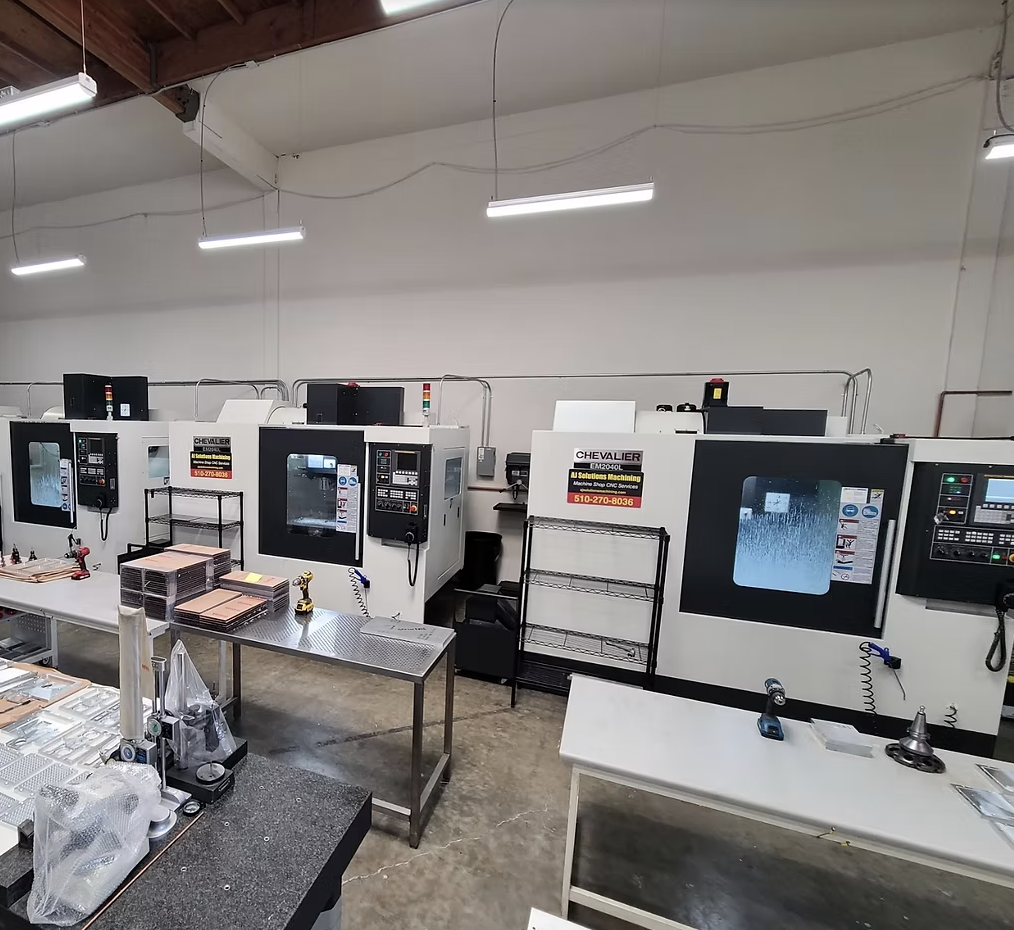
Aerospace and Defense CNC | Precision Engineered Parts | Aluminum & Steel Machining
Get Precision CNC Machining Services You Can Rely On. AJ Solutions Machining offers expert CNC milling and turning, producing custom metal parts to the highest standards.
Specialized Capabilities
- Multi-Axis Machining: For complex geometries and intricate parts, our machines provide unparalleled precision.
- Swiss CNC Machining: Specializing in small, complex parts for medical devices and electronics.
- Custom CNC Machining: Tailored solutions to meet your specific prints and specifications.
- Plastic Fabrication: Expert machining for industrial-grade plastics.
- Aerospace Machining: We meet the stringent requirements of the aerospace industry.
Rapid Turnaround CNC Prototyping: Fast Delivery for Silicon Valley Startups Fremont CA
The Bay Area’s #1 Choice for Custom Plastic Machining & Fabrication
Sub-headline: Mastering Complexity in High-Performance Plastics from Prototype to Production.
AJ Solutions Machining is a leader in Precision Plastic Fabrication. While many machine shops shy away from the unique challenges of plastic, we specialize in it. We understand the thermal expansion, stress relief, and “memory” of various polymers, allowing us to maintain extremely tight tolerances on even the most complex parts.
Specialized Plastic Machining Services
We are proud to serve clients across the region, including:
Our Fremont facility is equipped to handle a wide array of specialized plastic manufacturing processes:
-
CNC Routing & Vertical Milling: Ideal for Plexiglass sheets, Acrylic, and oversized plastic panels.
-
Advanced Lathe Work: Specialized turning including gear hobbing, broaching, spline cutting, and contour turning.
-
Complex Geometries: Expert machining of PVDF, Noryl, Acetal, and ABS for automation and medical applications.
-
Plastic Welding & Assembly: Comprehensive fabrication solutions including vacuum forming and custom plastic containers.
Why Choose AJ Solutions for Plastic Fabrication?
-
Material Expertise: Whether it’s clear Acrylic sheet polishing or high-heat PEEK machining for aerospace, we know how to handle your specific material.
-
Unparalleled Accuracy: We utilize Computer Numerical Control (CNC) to ensure every cut is identical, from the first prototype to the 10,000th production part.
-
Industry Versatility: We are a preferred vendor for Silicon Valley startups, University labs, and large-scale pharmaceutical manufacturers.
Contact Us Today
AJ Solutions Machining 45953 Warm Springs Boulevard, Unit 5 Fremont, CA 94539 Phone: 510-270-8036
Accepting all major credit cards: Visa, Master, and American Express.
The Bay Area’s #1 Choice for Custom Plastic Machining & Fabrication
Mastering Complexity in High-Performance Plastics from Prototype to Production.
AJ Solutions Machining is a leader in Precision Plastic Fabrication. While many machine shops shy away from the unique challenges of plastic, we specialize in it. We understand the thermal expansion, stress relief, and “memory” of various polymers, allowing us to maintain extremely tight tolerances on even the most complex parts.
Get Your Free Quote Today!
Ready to experience the AJ Solution Machining difference? We combine high-quality machining services with efficient processes to deliver top-notch parts with fast turnaround times.
Contact us today to discuss your project and receive a tailored solution.
Call us at: 510-270-8036
Custom Precision CNC Components: Fremont CA’s Top CNC Machine Shop
Your Reliable Partner for CNC Machining Services in Fremont, CA | Aerospace, Robotics, Medical
Strategically located to serve the entire Bay Area, AJ Solutions Machining provides fast and efficient manufacturing services to clients in Pleasanton, Concord, Walnut Creek, Livermore, San Mateo, Redwood City, and Union City.

Mastering Complexity: 5-Axis CNC Milling for Aerospace & Robotics Components
Our Advanced Machining Capabilities
We combine state-of-the-art technology with expert craftsmanship to deliver superior results.

- Multi-Axis Precision: We utilize advanced multi-axis CNC machines to produce complex parts with exceptional accuracy.
- Material Versatility: From Aluminum CNC Machining to stainless steel and titanium, we handle it all. Serving Walnut Creek, Livermore, and beyond.
Comprehensive Solutions: We are your source for Milling & Turning Fremont CA, complete CNC Machining Services, and high-quality Custom Metal Parts.
Why Choose AJ Solution Machining?
Precision and Accuracy: We deliver parts with tight tolerances and exceptional quality control.
Experienced Team: Our skilled machinists have the expertise to handle your most complex projects.
State-of-the-Art Equipment: We utilize the industry’s best CNC machines for superior results.
Customer Focus: We prioritize your satisfaction, working closely with you to meet every requirement.
On-Time Delivery: We understand the importance of deadlines and ensure timely delivery.
Competitive Pricing: We offer cost-effective solutions without compromising on quality.

Machining Difficult Materials: Expert Aluminum & Stainless Steel CNC Services
Your Reliable Partner for CNC Machining Services in Fremont CA
Contact AJ Solutions Today: 510-270-8036
Industries We Serve
We provide specialized machining services for high-demand sectors including:
- Aerospace
- Medical Device Machining (Adhering to strict quality standards)
- Automotive
- Electronics
- Industrial Manufacturing
Precision Engineered Parts, Crafted with Expertise.
AJ Solutions Machining delivers high-quality CNC milling and turning services for your most demanding projects. From prototypes to full production runs, our advanced technology and experienced team ensure exceptional accuracy and reliability. Get your custom metal parts manufactured to your exact specifications.

Serving the Entire Bay Area
Precision CNC Machining & Expert Plastic Fabrication in Fremont, CA
Your Trusted Bay Area Partner for High-Tolerance Milling, Turning, and Rapid Prototyping.
At AJ Solutions Machining, we combine advanced technology with unmatched technical expertise to deliver precision-engineered components. Based in Fremont, California, we specialize in high-quality CNC machining for both metals and plastics, serving the demanding needs of the Aerospace, Defense, Pharmaceutical, and Scientific Research industries.
Our Core Machining Capabilities
-
Precision CNC Milling & Turning: From rapid prototypes to full-scale production runs using state-of-the-art CNC Lathes and Vertical Milling centers.
-
CAD/CAM Engineering & Programming: Professional engineering services to transform complex geometries into reality.
-
Large Part Milling & Fabrication: Capacity for oversized components and complex manual milling/lathe work.
-
Close Tolerance Inspection: Rigorous quality control ensuring every part meets your exact specifications.
-
Rapid Turnaround: Optimized workflows to provide quick delivery without compromising on high-precision quality.
Materials We Work With
We are experts in machining a diverse range of materials to suit your industry-specific requirements:
-
Metals: Aluminum, Stainless Steel (303, 304, 316, 416), Copper, Brass, Bronze, and Tool Steel.
-
High-Performance Plastics: PEEK, Ultem, Torlon, Vespel, Delrin, and PTFE (Teflon).
-
Industrial Materials: G-10/G-11, Fiberglass, Phenolics, and Polycarbonate (Lexan).
Richmond CA, Fremont CA, Oakland CA, Berkeley CA, San Jose CA, Santa Clara CA, Hayward CA, San Leandro CA, Palo Alto CA, Sunnyvale CA, Union City CA, Mountain View CA, Pleasanton CA, Concord CA, Walnut Creek CA, Livermore CA, San Mateo CA, and Redwood City CA.
